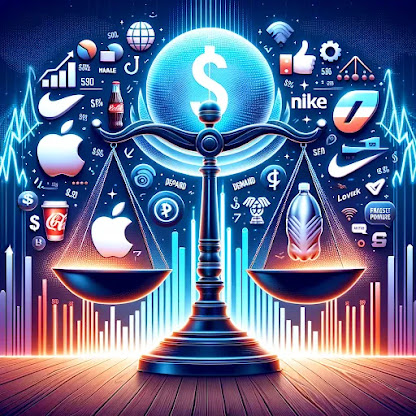In the competitive arena of the global market, a company's ability to command the price of its products or services stands as a testament to its strength and market influence. This capability, known as pricing power, distinguishes industry leaders from followers, enabling them to navigate market dynamics with agility and precision. At the heart of pricing power lies the subtle art of balancing demand with strategic pricing, a skill that can significantly bolster profit margins and drive revenue growth.
The Essence of Pricing Power:
Pricing power emerges from a company's unparalleled ability to adjust its prices without deterring its customer base. This dynamic capability allows businesses to reflect changes in demand or operational costs directly in their pricing strategies, maintaining profitability without sacrificing market share. Factors such as robust brand identity, innovation, customer loyalty, and market dominance are the pillars supporting a company's pricing leverage.
Navigating the Market with Strategic Pricing:
However, the landscape of pricing power is perpetually influenced by the ebb and flow of market conditions, competition, and consumer preferences. It demands a vigilant analysis of market trends and consumer behavior, ensuring that price adjustments are both strategic and conducive to long-term growth. Companies wielding this power must tread carefully, optimizing their pricing strategies to enhance value without alienating their customer base.
Showcasing Pricing Prowess: Industry Titans
Several companies exemplify the successful harnessing of pricing power across diverse sectors:
Apple Inc. stands at the forefront with its unmatched brand appeal and innovative product lineup. Apple's strategy of premium pricing reflects the high-value customers place on its technology, underpinning the company's enduring market appeal.
Nike Inc. commands the athletic wear market with its blend of cutting-edge design and brand prestige. Despite premium price tags, Nike's offerings continue to attract a dedicated global following, a testament to its effective brand positioning.
The Coca-Cola Company leverages its historical market presence and brand recognition to adjust pricing without denting its global demand. This soft drink giant's pricing strategy underscores the strength of brand loyalty and market saturation.
Amazon.com, Inc. uses its expansive online retail empire to set competitive prices, benefiting from economies of scale and a vast distribution network. Amazon's pricing flexibility allows it to adapt to market changes swiftly, reinforcing its market leadership.
Starbucks Corporation combines quality with experience, justifying higher prices for its coffee products. Starbucks' pricing strategy capitalizes on its brand experience, maintaining customer loyalty despite numerous competitors.
Conclusion:
Pricing power is not merely a financial lever but a strategic asset that reflects a company's market position and customer perception. It embodies the delicate balance between demand, cost, and competition, offering a pathway to sustainable growth and profitability. As exemplified by industry giants like Apple, Nike, Coca-Cola, Amazon, and Starbucks, effective use of pricing power can cement a company's market dominance. However, the true test lies in a company's ability to adapt its pricing strategy to the ever-changing market landscape, ensuring that this power remains a driving force behind its success.














0 Comments